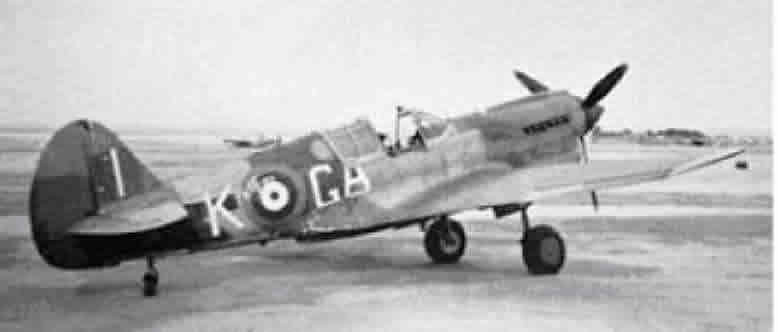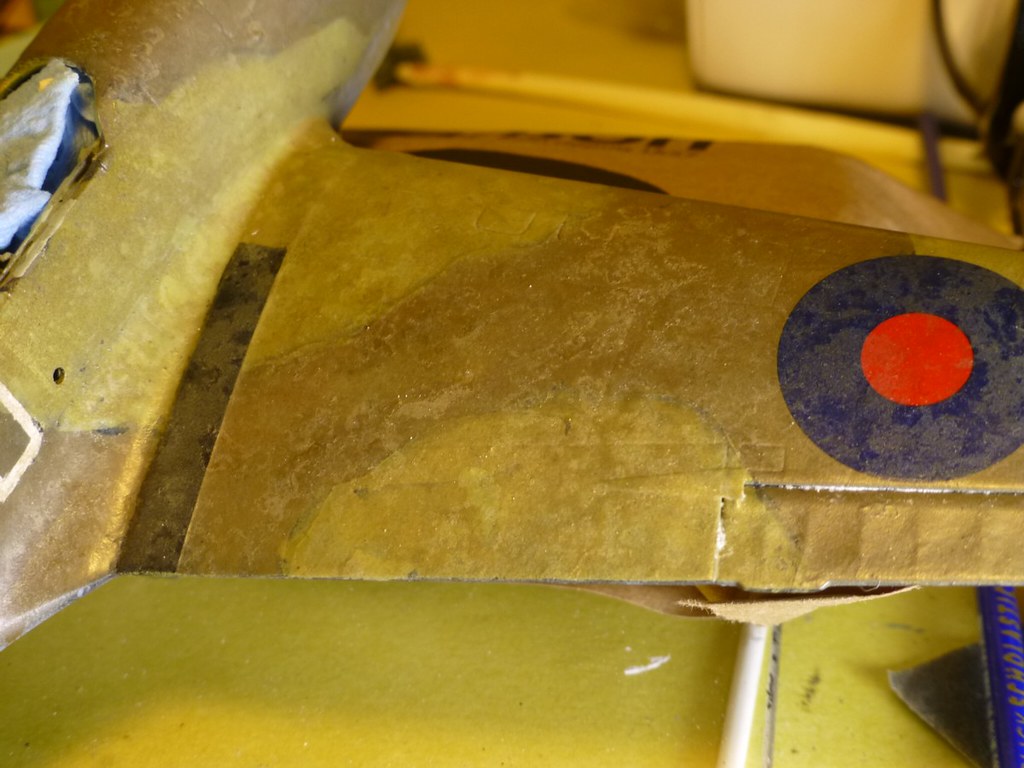Biplane blues on the Swordfish? Looks like it's been fixed. Bipes are always neat and Swordfish have definite funk appeal and great history. (Did remind me that I've made a vow to do both the Tamiya 1/48 Swordfish and Storch - two models that some fine modelers I know consider beyond excellent.)
I've started weathering the Tomahawk. Maybe I should try to explain what I aim for when making a kit. Although only an ideal (as Mig Jimenez once said, you can't really make a small plastic thing look quite like a big metal thing) I try to make models look as realistic as possible. I've stared at a few zillion photos and it strikes me that it was a very rare operational tank or aircraft that would have been considered clean. A plane flying in the desert or the South Pacific is going to be pounded by the elements from hour one and they do show it. And there are no clean tanks - even if one has just been given a bath by the crew (seen pics of exactly that) about 20 minutes in column on most roads will cover the thing will dust. (I've always promised to do a "commission day" ship. Of course ship modelers are very reluctant to weather despite photo evidence, so it might not stand out. Could try an "out of the factory" aircraft. Be a challenge to do a super clean build.) I do concentrate on mottled/faded finish, dust and fluid stains. I don't see huge numbers of chips on most aircraft (some of the SOPAC planes on both sides flew off coral fields and they showed it - like landing on sandpaper: ditto with late war IJ planes). Just as I don't see a lot of rust on tanks in service.
Anyway, here we've got a Tomahawk flying for the RAF in the Desert - figure 1941/43. (P-40E was called the Kittyhawk and served well into 1943.) Check a couple of things from these photos. You can see the camo is very seriously weathered - I'd guess above all from dust. Also note - look closely here - that the camo is "hard" but it's not hard like rock. Indeed, and I've noticed this about RAF planes throughout the war, the camo lines are definitely a little feathered. Let's start with this Kittyhawk taking off - you'll see why these guys got dusty.
 RAF6 by Eric Bergerud, on Flickr
RAF6 by Eric Bergerud, on Flickr
Below are a few WWII images of Desert AF Tomahawks and one Kittyhawk. The first one is Caldwell's, photographed when he landed after near calamity. The others just show the desert look. The crash-landed Tomahawk shows the camo pattern very well - unless the RAF was overwhelmed with spare fighters, you can bet that plane flew again.
 RAF1 by Eric Bergerud, on Flickr
RAF1 by Eric Bergerud, on Flickr
 RAAF2 by Eric Bergerud, on Flickr
RAAF2 by Eric Bergerud, on Flickr
 RAF5 by Eric Bergerud, on Flickr
RAF5 by Eric Bergerud, on Flickr
 RAF3 by Eric Bergerud, on Flickr
RAF3 by Eric Bergerud, on Flickr
OK: we need some serious weathering. The black based finish is nicely mottled. I'm going to follow Doog's wonderful build of a heavily weathered SOPAC Corsair. So the first step is salt fading. The salt not only fades the surface, but it leaves it with very irregular markings which is exactly what I want. Technique is pretty simple. Wet the plane with warm soapy water and shake on a bunch of salt (I like sea salt) and let dry. Then shoot it with a very light coat of a tan-gray: as the salt turns dirty from white, that's enough. I did the process twice. Oils are up next. After the oils are applied and the kit finally given a matte varnish, the irregular finish will become less evident. That's okay, because I'm pretty sure I'm going to end with a light dusting of pigments which I don't usually use on planes. But I've never done a desert warplane before either. We'll see. First pic is salt on: second is on completion and third a detail of the effect. I do like this effect. But it's only one of many steps.
 salt by Eric Bergerud, on Flickr
salt by Eric Bergerud, on Flickr
 saltfus by Eric Bergerud, on Flickr
saltfus by Eric Bergerud, on Flickr
 saltdet by Eric Bergerud, on Flickr
saltdet by Eric Bergerud, on Flickr
Next up oils - lots of them. And then who knows. Wish me luck.
Eric